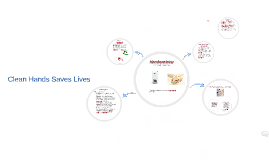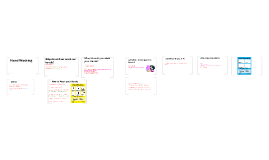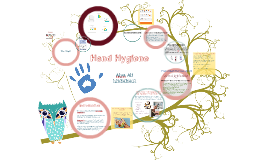Hand Hygiene
Transcript: Did you know....? Washing hands with soap and water is less effective than hygienic hand disinfectants. Hygienic disinfectants eliminate most of the bacteria that cause nosocomial infections. It is in good practice to use hygienic disinfectants before and after contact with a patient. You should use hygienic disinfectants before any type of invasive procedure. (Kampf, Loffler, & Gastmeier, 2009) Handwashing Hygienic disinfectants are often blamed for irritating, dry, and cracked hands among health care workers. Believe it or not soap and water are more damaging to the skin than hygienic disinfectants. It has been suggested that alcohol based rubs applied after hand- washing can reduce irritation caused by hand-washing. (Kampf, Loffler, Gastmeier, 2009) Key Points Clean Hands Saves Lives Important tips to remember Inweregbu, K., Dave, J., Pittard, A., (2005). Nosocomial infection. Continuing Education in Anaesthsia, Critical Care & Pain, 5(1), 14-17. Use alcohol based rub before and after patient contact and any invasive procedure. Wash hands with soap and water if you come into contact with the norovirus, C. diff, or your hands are visibly soiled. You should always wear gloves when working with a patient, but gloves does not take the place of handwashing. Recommendations on using soap and water... References APA 6th edition The benefits of using prezi are it allows material to be presented in a unique way, cost effective, and easily accessed. Prezi can be accessed from any web-enabled computer and allows you to share online. The disadvantages of using prezi are it can cause dizziness to the viewer, it's not printer friendly, and the viewer is unable to access if there is unreliable internet connection. WHO. (2015). System change- changing hand hygiene behaviour at the point of care. Retrieved from www.who.int/gpsc/tools/faqs/system_change/en/ Irritating to the hands One in ten patients will acquire a nosocomial infection. 1/3 of nosocomial infections are preventable. Handwashing is the best preventative measure against the spread of infection. (Inweregbu, Dave, & Pittard, 2005) Nosocomial infections are infections that are acquired 48 hours after admission into the hospital, 3 days after hospital discharge or 30 days after an operation. (Inweregbu, Dave, & Pittard, 2005) Kampf, G., Loffler, H., Gastmeier, P. (2009). Hand hygiene for the prevention of nosocomial infections. Deutsches Arzteblatt International, 106(40), 649-655. doi: 10.3238/arztebl.2009.0649 Advantages and Disadvantages Use soap and water after coming in contact with noroviruses. Use soap and water after coming in contact with spore forming bacterias such as C. difficile. Use soap and water if hands are visibly soiled. Use soap and water after using the restroom. ( World Health Organization, 2015) The target audience for this presentation would be any hospital staff that come in direct contact with patient's. The prezi presentation is used to educate health care workers about nosocomial infections and ways to prevent an infection. The presentation also provides information on when to use alcohol based rubs versus washing with soap and water. What is a Nosocomial Infection? The best strategies to prevent a nosocomial infection. Hand Hygiene Project Information for the Health Care Worker The Facts about Soap and water

















